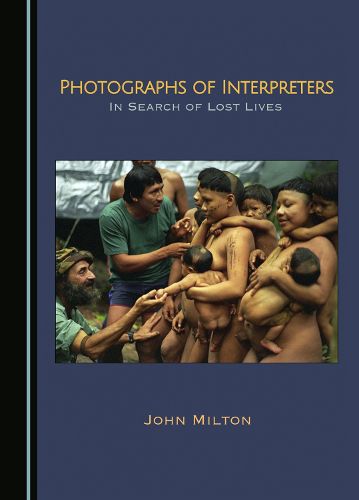Readings Newsletter
Become a Readings Member to make your shopping experience even easier.
Sign in or sign up for free!
You’re not far away from qualifying for FREE standard shipping within Australia
You’ve qualified for FREE standard shipping within Australia
The cart is loading…






This book rescues photographs of interpreters: from the 19th century, French diplomat and sinologist, Arnold Vissiere, and Julius Meyer, a Jewish trader in Wyoming and interpreter for native American groups; John Brown, the African-American who interpreted for travellers to the Putamayo region in Peru, witness of the mistreatment of indigenous rubber extractors in the "Devil's Paradise"; Viktor Sukhodrev, Russian diplomatic interpreter, whom Richard Nixon trusted more than his own White House staff.From Brazil there are the boy interpreters from the Xeta indigenous group; Euvaldo Gomes making the first contact with the Xavante in 1949, after the participants in previous attempts were killed; the first communication with the Korubo in the Amazon in 1996; the familiar figures of Raoni and his interpreter, Megaron; and General Vernon Walters, the American military attache and linguist, a key actor in the 1964 military coup.Photographs are analyzed as a formal visual composition; a performance; an act of interpreting, a moment in history that expresses geopolitical and economic power, social habits, and fashions; and salvaging lives lost in the sea of history.
$9.00 standard shipping within Australia
FREE standard shipping within Australia for orders over $100.00
Express & International shipping calculated at checkout
This book rescues photographs of interpreters: from the 19th century, French diplomat and sinologist, Arnold Vissiere, and Julius Meyer, a Jewish trader in Wyoming and interpreter for native American groups; John Brown, the African-American who interpreted for travellers to the Putamayo region in Peru, witness of the mistreatment of indigenous rubber extractors in the "Devil's Paradise"; Viktor Sukhodrev, Russian diplomatic interpreter, whom Richard Nixon trusted more than his own White House staff.From Brazil there are the boy interpreters from the Xeta indigenous group; Euvaldo Gomes making the first contact with the Xavante in 1949, after the participants in previous attempts were killed; the first communication with the Korubo in the Amazon in 1996; the familiar figures of Raoni and his interpreter, Megaron; and General Vernon Walters, the American military attache and linguist, a key actor in the 1964 military coup.Photographs are analyzed as a formal visual composition; a performance; an act of interpreting, a moment in history that expresses geopolitical and economic power, social habits, and fashions; and salvaging lives lost in the sea of history.